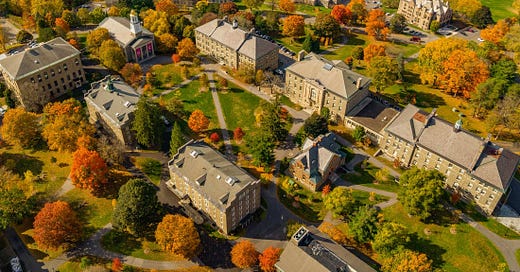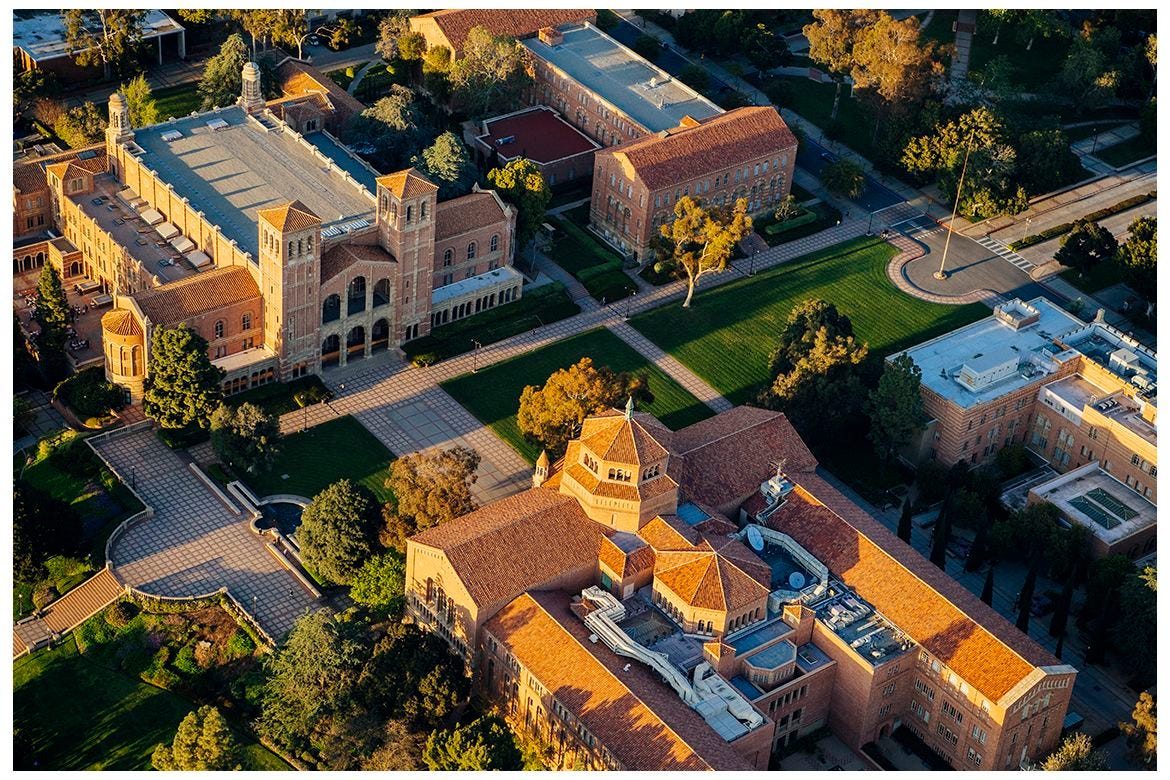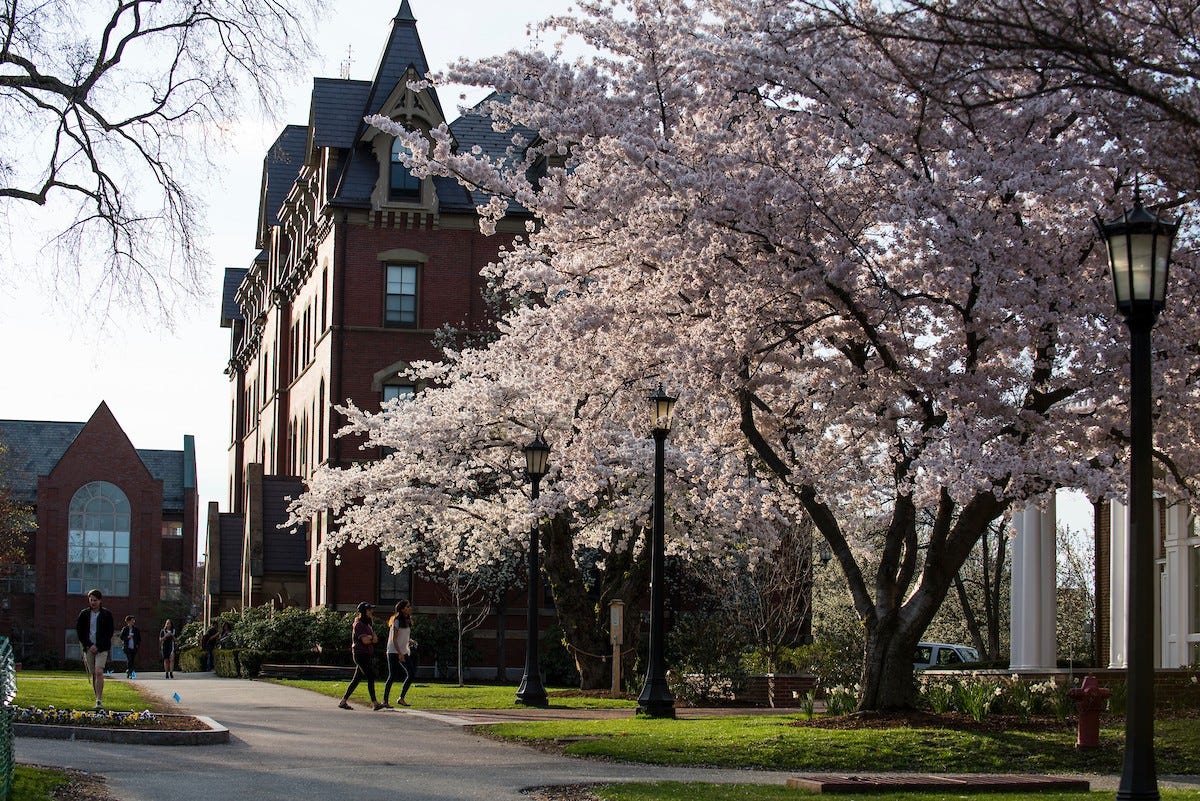Although broader conclusions won’t be possible until comprehensive IPEDS information is released in a few years, data on the 2022 admissions cycle coming out piecemeal reveals a few emerging themes and stories. Let’s first look at the raw application totals before moving on in a later post to admissions percentages and the different ways colleges are approaching yields.
Available applications totals and data for highly selective schools and others covered here can be found at the end of the post.
What’s typical for highly selective colleges’ applications?
It isn’t news that almost all highly selective schools are receiving many more applications. The typical highly-selective school is seeing at least 20% growth in 2022 compared to 2020. This 20% level is realistically the baseline for a moderately successful enrollment effort in the current cycle.
All the Ivy League schools reporting application totals experienced at least a 30% jump from 2020 to 2022. Harvard’s total jumped 52%. (Princeton doesn’t look to have released their figures.)
Numerous selective colleges outside the Ivy League show dramatic growth in applications. This growth is spread across different categories, from large public universities to STEM-focussed institutions to liberal arts colleges in small towns. At the same time, peers of these surging institutions, similar to them and often located nearby, are sometimes showing desultory results in comparison. Enrollment performance outside the small set of highly-selective schools is diverging.
Two highly selective schools are not keeping pace with the applications growth: Bowdoin (flat) and Tulane (a small decline). With a retention rate below the average for a highly selective school, Tulane might be facing the limits of its location. There may just not be that many students who want to live in New Orleans. Bowdoin and Tulane are outliers. Every other college ranking in the top 20 of 2020 admissions selectivity which has disclosed data saw growth of at least 20%.
In 2020, the most recent year where we have comprehensive data, 11.5 million applications were submitted and 1.5 million students enrolled in selective colleges (selective = not open admissions). Making a guess, we can expect roughly 13 millions applications to be submitted this year with slightly under 1.5 million students once again enrolling in selective schools and ~0.7 million entering open-enrollment community and 4-year colleges.
Application factories
UCLA appears to have seized the pole position in applications volume this year. The school processed just a hair under 150,000 applications, the most of any schools we looked at. UCLA is one among 5 UC campuses receiving over 100,000 applications. (Berkeley, San Diego, Irvine and Santa Barbara were the others.) Outside the UCs, NYU was the leader, taking in a mere 105,000 applications, followed by Northeastern, with 91,000. UCLA, NYU and Northeastern all show application volume increases in the 30-40% range since 2020. Berkeley reported 46% more applications.
Putting yourself in the shoes of the university administrators, does allocating more resources to the enrollment offices for application evaluation meaningfully benefit the university? Many will answer that it doesn’t. The sheer number of applications these big schools are processing is gargantuan and, absent heroic efforts, can realistically only be handled by extensive automation and quantitative rule-setting.
It’s logical to attribute some portion of the UC application surge to changes in standardized testing requirements. That ideologically-driven change - entirely driven by concepts of fairness and predictive value and never by questions related to process and efficiency - appears to be contributing to admissions office overload and to students spending ever more time and money on applications. And, without testing, the opacity of the admissions process in an increasingly selective UC system may also foster a perception that admissions decisions are arbitrary and heighten student stress. Whatever the cause of the applications surge, California higher ed may have an emerging problem on its hands.
GPT-3 needs to come to the rescue of both students and enrollment staff, with AI-powered essay writing seamlessly connected to AI-powered essay reviewing. This seems like a joke at first, except that an evolution like this could happen very naturally - and quickly - in a situation with overwhelming numbers of applications and limited resources.
MIT’s applications surge and testing
MIT saw among the fastest applications growth, with over 33,000 applications vs just 20,000 two years ago (+66%). In a widely-discussed move this March, the university re-instated standardized testing as a requirement. The blog post by MIT’s admissions director, Stu Schmill, provided academic reasons why the tests served the school well. Schmill was careful to note that the board scores were used as a cut-off mechanism, not a factor in final admissions, with the change affecting future admissions cycles, not 2022.
MIT’s application volume puts this re-instatement in a new context. Deluged with applications and likely without the staff to handle the work, it’s certainly possible the university’s leadership faced a choice between either significantly expanding the enrollment department budget and headcount or finding a way to increase department productivity. Stepping away from the controversy about testing, consider it from the standpoint of MIT’s management, who either need to spend more or make a process more efficient on a dollars and people basis. The choice seems clear: MIT is about academic excellence. The last place you’d want to spend more money is on an enrollment process, especially one where you can’t admit all the qualified students anyway. Standardized testing is a cost effective way of increasing the enrollment function’s productivity.
Who’s hot?
While Northeastern in Boston has been receiving attention for its popularity and greater selectivity, several other smaller private colleges are enjoying even steeper increases in application volumes on a percentage basis. Colgate, in upstate New York, is one such college. With a 148% growth in applications between 2020 and 2022, its admissions office went from processing 8,500 applications to over 21,000 this year. It may be the hottest school in the nation. Other private colleges like Macalester in Minnesota, Dickinson in central Pennsylvania, and Williams, Tufts and Middlebury in New England also saw faster proportional increases than Northeastern. Of course, Northeastern is a much bigger school so its raw numbers swamp other increases, but in terms of growth rates, it has competition.
Who’s not
We recently forecasted that Pitzer College would likely be the most expensive college in the US in the upcoming year. Very surprisingly, the school has seen an absolute decline in applications, from 4,264 in 2020 to just 3,674 this year, completely out-of-pattern for highly-selective schools. In fact, Pitzer saw the worst performance on this metric of any schools we looked at. It’s important to untangle correlation and causality here. Pitzer could be raising prices because they are having difficulty enrolling enough students or possibly its high prices may be dissuading applicants. We can’t be sure which is the driver. Wake Forest, our 2021 most expensive school, saw a 20% applications rise according to an early informal report, and always-expensive NYU is also breaking records. That suggests Pitzer is seeing problems specific to its own sandlot.
Divergence
Similar colleges are experiencing diverging performance. We pointed to Dickinson College’s excellent enrollment stats above. While not a particularly selective college (2020 admissions rate: 52%), it is enjoying a rising wave of student interest, which its own press release termed “staggering”. Nearby Franklin & Marshall, similar in size and profile if a tad more selective, is according to informal reports receiving largely flat applications without the same surge (+2% vs Dickinson’s 53% increase between 2020 and 2022). Two other larger eastern Pennsylvania institutions with similar selectivity also exhibit this divergence. Villanova, outside of Philadelphia saw an 8% increase while, a bit farther north, Bucknell benefitted from a larger 18% increase. The Ivies and other highly selective schools are all seeing application surges, but the change is not affecting less selective schools uniformly. Some are greatly benefitting; others are not.
Boston - “not a big college town”
Besides the University of California’s system, one other regional phenomenon that stands out is the great popularity of the Boston area among high schoolers. Each of the highly selective Boston colleges in our screen enjoyed a rise in applications of at least 30% since 2020:
Fearless prediction: in a few years, a streaming show about young professionals making their way through their 20s while living in Boston will appear - and it will be a big hit.
We need to emphasize that much of the data used here is preliminary and subject to revision. In an upcoming post, we will next look at the admissions rates and how different colleges are treating perhaps-unreliable historical yield figures in the current market.
Find more information at the CTAS site. CTAS provides data, reports and personalized assistance with college pricing and aid appeals.








